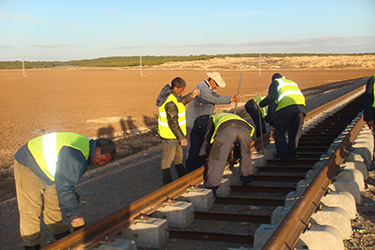How Crossing Roads Shapes Animal and Game Design
The act of crossing roads is a fundamental behavior observed across myriad animal species. In the wild, animals frequently encounter roads—whether natural or human-made—posing unique survival challenges. Understanding how animals navigate these obstacles offers valuable insights for both biological sciences and interactive entertainment. Modern game design, in particular, draws heavily from natural crossing behaviors to craft engaging, realistic experiences that educate and entertain simultaneously.
Table of Contents
- The Biological and Behavioral Foundations of Road-Crossing in Animals
- The Evolution of Road Crossing in Video Games
- Game Design Principles Inspired by Animal Crossing Behaviors
- «Chicken Road 2»: A Modern Illustration of Crossing Road Mechanics
- Educational Value and Behavioral Insights Through Game Design
- Non-Obvious Aspects of Road Crossing in Animal and Game Design
- Practical Implications for Developers and Educators
- Conclusion
The Biological and Behavioral Foundations of Road-Crossing in Animals
In the natural world, animals have evolved various instinctive behaviors to safely navigate roads. For example, small mammals like rabbits and rodents often rely on heightened senses and quick reflexes to cross busy streets during their foraging or migration. Larger animals such as deer use their spatial awareness and herd behaviors to minimize risks, often following familiar routes or crossing during specific times of the day when traffic is lighter.
Imprinting and early life experiences play a crucial role in shaping crossing behavior. Young animals learn safe crossing points and timing from their mothers or social groups, which can significantly influence their survival skills. For instance, a young bird observing its parents crossing a road might develop an innate understanding of when and where to cross, a process akin to early learning or imprinting in biological terms.
These natural behaviors have profound implications for designing realistic animal characters in games. Developers often mimic instinctive cues—like hesitation, sprinting, or pattern recognition—to make animal movements believable. Such authenticity enhances player immersion and provides educational opportunities by illustrating real animal strategies for crossing roads safely.
The Evolution of Road Crossing in Video Games
Early video games rarely featured crossing obstacles; when they did, the focus was mainly on avoiding hazards without emphasizing the crossing process itself. For example, classic arcade games like Frogger (1981) introduced players to the concept of guiding characters across busy roads, but the mechanics were relatively simple—pressing a button to move forward or sideways.
Over time, game designers transitioned from basic obstacle avoidance to more complex crossing scenarios that incorporated timing, pattern recognition, and environmental cues. Modern titles simulate realistic crossing behaviors, requiring players to analyze traffic patterns, anticipate movements, and judge safe moments to cross. This evolution not only increases challenge but also makes gameplay more engaging and educational, as players learn about the importance of patience and situational awareness.
Incorporating crossing mechanics enhances gameplay by adding layers of strategy and realism. It transforms a simple avoidance task into a dynamic interaction that fosters cognitive skills, such as quick decision-making and risk assessment.
Game Design Principles Inspired by Animal Crossing Behaviors
- Balancing challenge and safety: Games should simulate the natural trade-off animals face—waiting for the right moment versus risking a dangerous crossing. This balance maintains player engagement without causing frustration.
- Mimicking natural crossing environments: Incorporating elements like traffic flow, visual cues, and environmental sounds helps create realistic scenarios that educate players about animal behavior.
- Timing, pattern recognition, and risk assessment: Core gameplay mechanics involve recognizing traffic patterns, judging optimal crossing times, and evaluating risks—skills that mirror animal survival strategies.
«Chicken Road 2»: A Modern Illustration of Crossing Road Mechanics
Developed by Hipster Whale, super addictive tbh now exemplifies how modern games leverage real-world crossing behaviors. The game’s design draws inspiration from animals’ instinctive actions—such as timing, speed, and pattern recognition—to create engaging challenges that are both fun and educational.
By simulating natural crossing scenarios, the game allows players to learn about animal safety and decision-making. Its support for HTML5 (accessible in 98% of browsers) ensures that a broad audience can experience these mechanics without technical barriers, broadening its educational and entertainment value.
Educational Value and Behavioral Insights Through Game Design
Crossing scenarios in games serve as effective tools for teaching players about animal behavior and safety. For example, simulating how animals recognize safe crossing points or respond to environmental cues can foster understanding and empathy. Games can also replicate imprinting processes—where early exposure influences future behavior—by allowing players to experience decision-making at critical moments.
« Games that incorporate crossing mechanics not only entertain but also promote awareness of wildlife challenges, fostering a more informed and compassionate audience. »
Such mechanics have potential beyond entertainment—they can be integrated into educational platforms and conservation programs, making abstract concepts tangible and memorable.
Non-Obvious Aspects of Road Crossing in Animal and Game Design
- Cultural and environmental influences: Different regions and habitats influence crossing behaviors. For instance, urban-adapted animals may learn to cross roads during specific times or at particular locations, which game designers can incorporate to add realism.
- Ethical considerations: Anthropomorphizing animals—imparting human-like motives or emotions—can lead to misconceptions. It’s essential to balance realism with sensitivity, especially when depicting vulnerable species or habitats.
- Future trends: Integrating augmented reality (AR) and real-world data, such as traffic flow or animal migration patterns, could revolutionize crossing mechanics in educational games, making them more immersive and contextually accurate.
Practical Implications for Developers and Educators
- Designing realistic crossing challenges: Incorporate authentic traffic patterns and environmental cues to enhance educational value and gameplay realism.
- Promoting conservation awareness: Use crossing scenarios to highlight wildlife safety issues, encouraging players to think critically about human-wildlife interactions.
- Leveraging technological support: Platforms like HTML5 facilitate the development of accessible, cross-browser games that reach diverse audiences, amplifying educational impact.
Conclusion: The Significance of Road Crossing as a Cross-Disciplinary Concept in Animal and Game Design
Crossing roads encapsulates a rich intersection of biology, psychology, and technology. From the instinctive behaviors animals develop to navigate increasingly complex environments, to the innovative ways designers translate these behaviors into engaging game mechanics, crossing scenarios serve as vital educational and entertainment tools. Modern examples like super addictive tbh now illustrate how leveraging natural behaviors enhances player experience and understanding.
« Integrating realistic crossing behaviors in games fosters empathy, educates about wildlife safety, and drives innovation across disciplines. »
By examining the principles underlying road crossing, developers and educators can create more meaningful, impactful experiences that bridge scientific understanding with interactive fun. As technology advances, the potential for immersive, real-world data-driven crossing mechanics will only grow, promising exciting developments at the nexus of animal behavior and game design.





